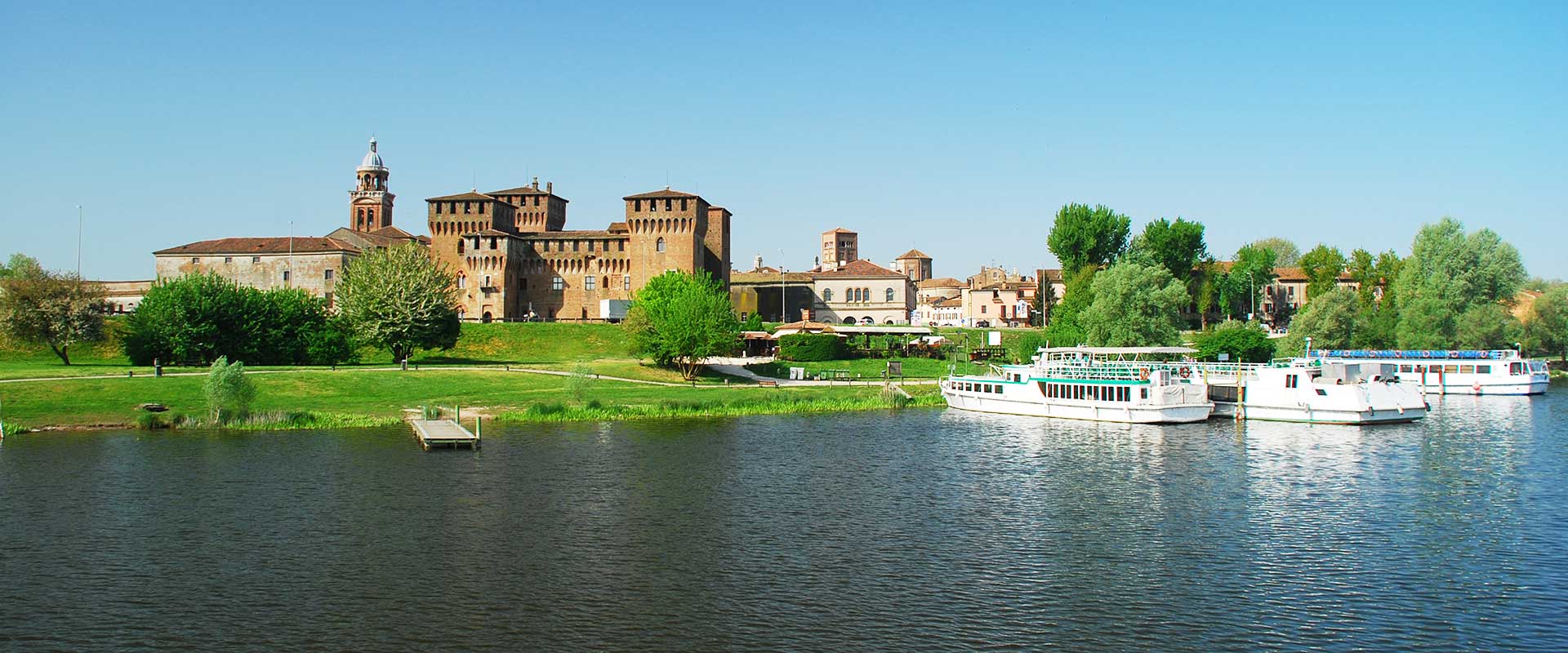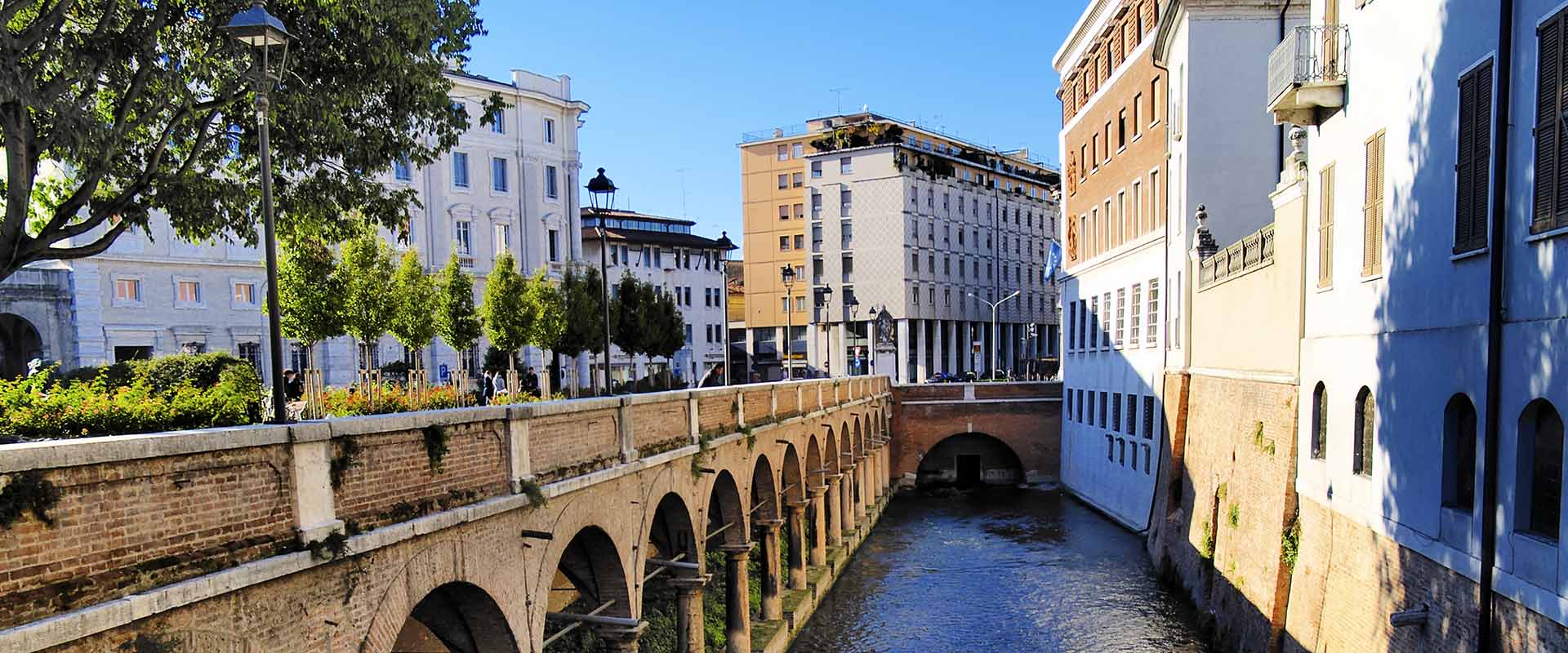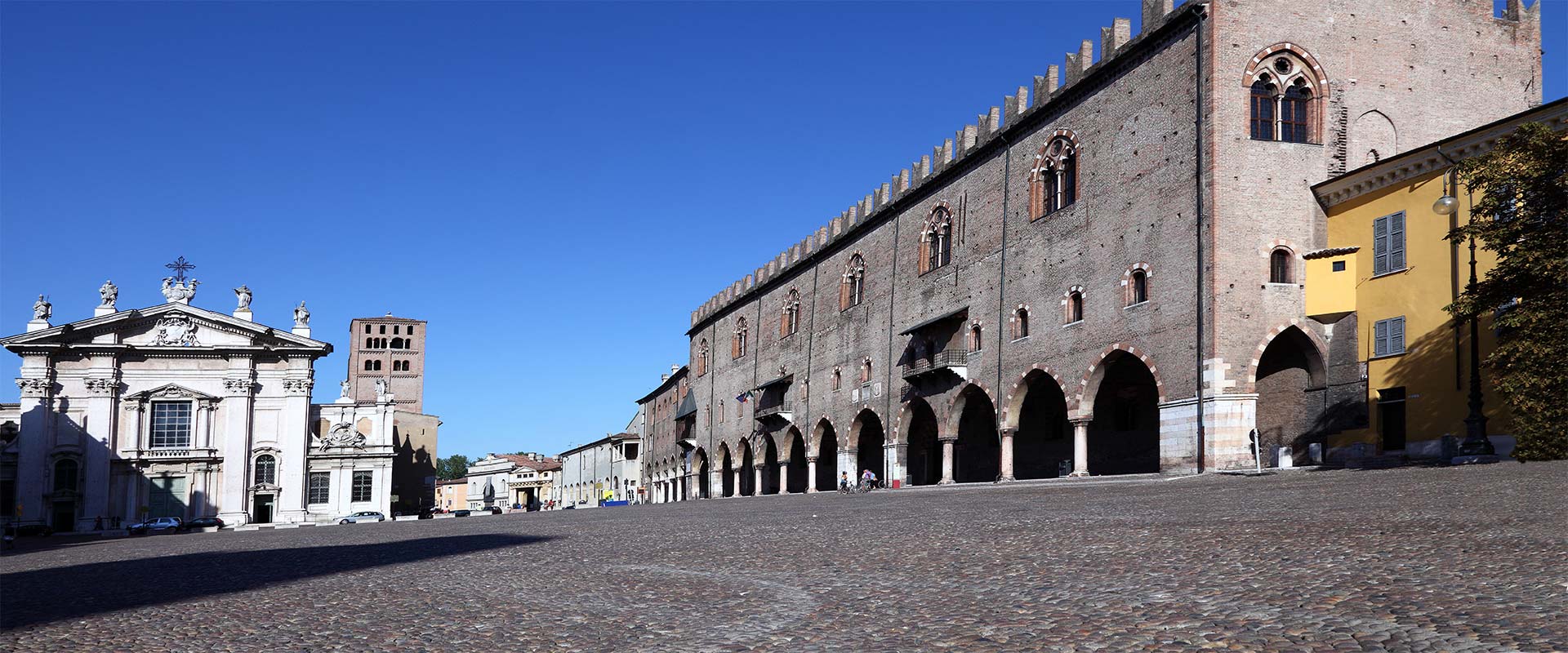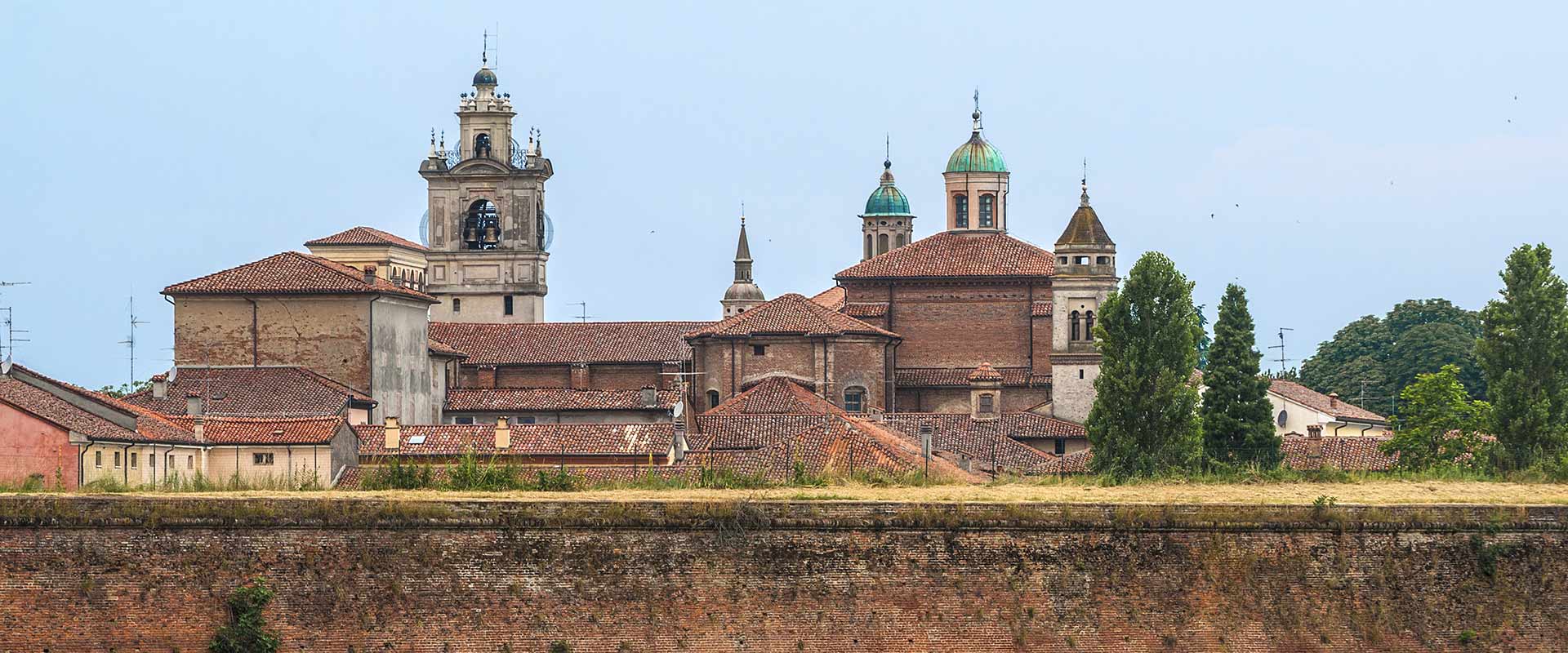Mantua Art
a cura di Visit MantovaComunication campaign promoted by Camera di Commercio, with the cooperation of the Commune and the Province, Confesercenti and Confcommercio of Mantua.
City of Mantua
The story of Mantua begins in classical age. Following a legend the city was founded by the prophetess Manto: escaped from Tebe, where the father Tiresia was killed, Manto arrived onto the Mincio riverside and with her tears she created a lake.Matua is also the town of the latin poet Virgilio, the cown of big buildings and the homeland of art masterpieces and renaissance architecture. From 1300 to 1700 the illuminated seignory of Gonzaga family made of Mantua one of the more elegants courts. The Ducal Palace, the cathedral, Palace Te and St. George castle, the city centre is a chest of treasures with no limits: a simple list is not enough to explain its secrets and charm.

Mantua province extends itself in Pianura Padana, beneath green cultivated land and the waters of its rivers and lakes. Mantua is built on two islands composed of debris that Mincio River transported during time and time. The first settlements traces go back to 2000 b.C. In VII century the Etruscan people found the village of Mantua, in honour to Manto, one of their Goddess. in 214 b.C. Mantus fall in Romans hands till The fall of Roman Occidental Empire (476 a.C.). Goths, Bizantins, Longobards and Frenchs ruined the town destroying everything till when the town, a little before 1000 a.C., became a land of Canossa Family: after centuries of decadence Mantua started again to enrich of important buildings. With the death of Matilde of Canossa, burn perhaps in Mantua in 1046, the town was declared a free Commune.
From the XIII century begins for Mantua a long period of magnificence, that continued under Gonzaga dinasty. Before marquises, than Dukes of Mantua, The Gonzaga claimed at their court the most famous artists of that period, Alberti and Pisanello, Mantegna and iulio Romano. The Lordship of Gonzaga family begun cracking in the first years of 1600. In 1627 Vincenzo II gave a large part of the family richness to Charles I. The decline was completed in 1708, when the possession of Mantua passed under Asburgo family crown. In Risorgimento period Mantua was a defensive fortress: together with Verona, Peschiera and Legnago it was one of the vertex of the Austrian Rectangle, till 1866, year in which the town became part of Italian Reign.
Its history, its incredible events calendar and its rich artistic patrimony, between the richest and best conserved in Italy, has given to Mantua the possibility to be candidate as European capital of culture for 2019.
From the XIII century begins for Mantua a long period of magnificence, that continued under Gonzaga dinasty. Before marquises, than Dukes of Mantua, The Gonzaga claimed at their court the most famous artists of that period, Alberti and Pisanello, Mantegna and iulio Romano. The Lordship of Gonzaga family begun cracking in the first years of 1600. In 1627 Vincenzo II gave a large part of the family richness to Charles I. The decline was completed in 1708, when the possession of Mantua passed under Asburgo family crown. In Risorgimento period Mantua was a defensive fortress: together with Verona, Peschiera and Legnago it was one of the vertex of the Austrian Rectangle, till 1866, year in which the town became part of Italian Reign.
Its history, its incredible events calendar and its rich artistic patrimony, between the richest and best conserved in Italy, has given to Mantua the possibility to be candidate as European capital of culture for 2019.




